|
|
Bright Solutions
for Dyslexia
Newsletter
October 2025 |
|
|
|

Follow
Susan Barton on
  
  
Barton
Certification
New dates will be announced in our
next newsletter.
Certification Info
Left Behind
Follow Your Instincts
Happy Birthday Pablo Picasso
Ruby’s Love Of Learning
How To Spot Dyslexia
Barton Bulletin
Send me a list of:
Certified Barton Tutors
Screeners and Testers
|
|
|
Left Behind
|
 |
 |
Left Behind—A Dyslexia Documentary
October is Dyslexia Awareness Month—a time to share stories that deepen understanding and spark change. A new documentary called Left Behind sheds light on the struggles of New York City schoolchildren with dyslexia.
The film follows a group of parents who, frustrated by the lack of support in schools, founded the Literacy Academy Collective. Their work is driven by two sobering facts: 1 in 5 people are dyslexic, and nearly half of incarcerated people share this diagnosis. Yet, through grassroots activism and determination, these families are fighting to de-stigmatize dyslexia and secure the education their children deserve.
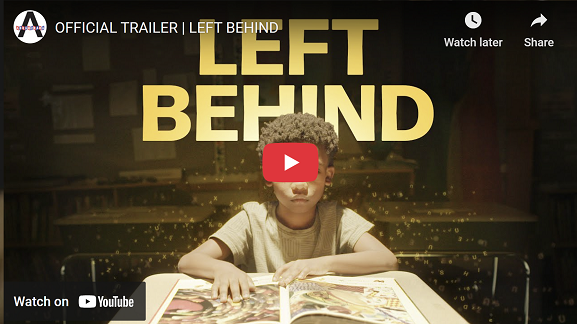
The film is both eye-opening and inspiring, reminding us of the resilience of families who refuse to give up on their children’s right to learn. As reviewer Karen McMullen notes, Left Behind “offers an uplifting message of hope and resilience.” This documentary is a must-watch for parents, educators, and advocates.
Left Behind premiered at DOC NYC and is now available to stream online as part of the festival. For more information, visit left behind the film or doc nyc.
Questions about viewing options may be directed to info@docnyc.net.
|
|
|
| |
|
Follow Your Instincts
|
 |
 |
Parents often sense when something isn’t quite right with their child’s learning. Yet it’s easy to dismiss those feelings after hearing reassurances from teachers, friends, and even relatives. Please trust your gut.
If your child shows three or more of the preschool warning signs—and then begins struggling with reading, spelling, writing, or math in kindergarten or first grade—dyslexia may be the cause.
Because dyslexia is hereditary, one of the strongest preschool warning signs is a family history of reading and spelling difficulties among parents, siblings, or even grandparents, aunts, uncles, or cousins.

When dyslexia is suspected, the worst thing you can do is wait. Early action makes all the difference. While it is never too late to get the right kind of help, the sooner your child receives the right kind of support, the better their chance to thrive.
If you’re not sure where to begin, watch Susan Barton's video called 9 Things Parents Should Do.
|
 |
|
|
|
 |
|
Happy Birthday Pablo Picasso
|
 |
| |
Pablo Picasso—Visual Genius
Happy Birthday to Pablo Picasso, born October 25, 1881. Picasso may have been a genius with a paintbrush, but in the classroom he was anything but a star pupil. He once admitted, “I had not even learned to read and write at school” (The New Yorker, 1957). Teachers recalled him as distracted, uninterested, and more likely to sketch pigeons than follow arithmetic. Some researchers now suggest his academic struggles weren’t laziness at all—but possible signs of dyslexia, a condition that makes reading and writing difficult while often sharpening visual-spatial strengths.
According to DyslexiaHelp at the University of Michigan, Picasso often landed in trouble, only to use punishment time as an opportunity to draw. These stories suggest a boy whose brain processed information differently: clumsy with letters, but brilliantly fluent in images.
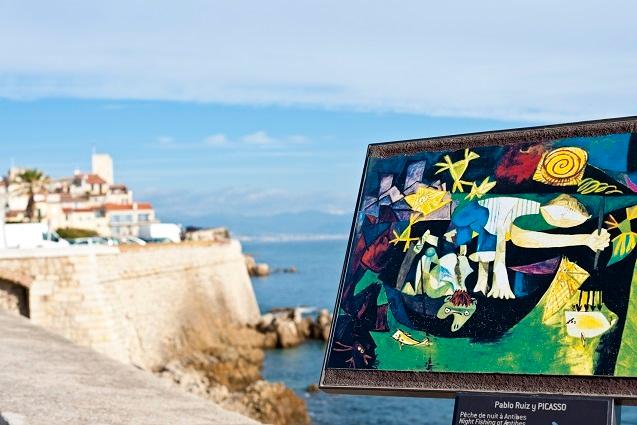
That difference may have changed the course of art history. As The Telegraph noted, dyslexia can enhance visual-spatial reasoning—and Picasso’s Cubist work exemplifies that strength. His paintings flipped, distorted, and reordered objects, showing multiple perspectives at once. What frustrated teachers in the classroom may have been the very quirk that allowed him to reimagine reality on canvas.
Of course, Picasso was never formally diagnosed. But the speculation reframes his story: the boy who struggled with words became the man who invented a new language of images. It’s a reminder that what looks like weakness in one setting can become revolutionary strength in another.
|
|
|
|
Ruby’s Love Of Learning
|
 |
| |
Ruby's Love Of Learning
By Susan Barton
Susan Barton truly appreciates hearing from graduates of the Barton Reading & Spelling System as they share their unique dyslexia journeys. Here’s Ruby’s story:
Ruby always knew that she “had something” because she felt like she learned differently from her classmates. She couldn’t read until third grade and constantly struggled with spelling. “For a long time, I felt stupid, like I couldn’t learn anything,” she recalls. “I just thought I was dumb.”
Everything changed when her mom discovered the Barton Reading & Spelling System. Ruby was nervous the first time she met with her Certified Barton Tutor, Laurie Frydenlund. But soon she realized that Laurie understood her in a way her teachers at school never had. Working through the Barton System gave Ruby confidence—something she says she never had before.
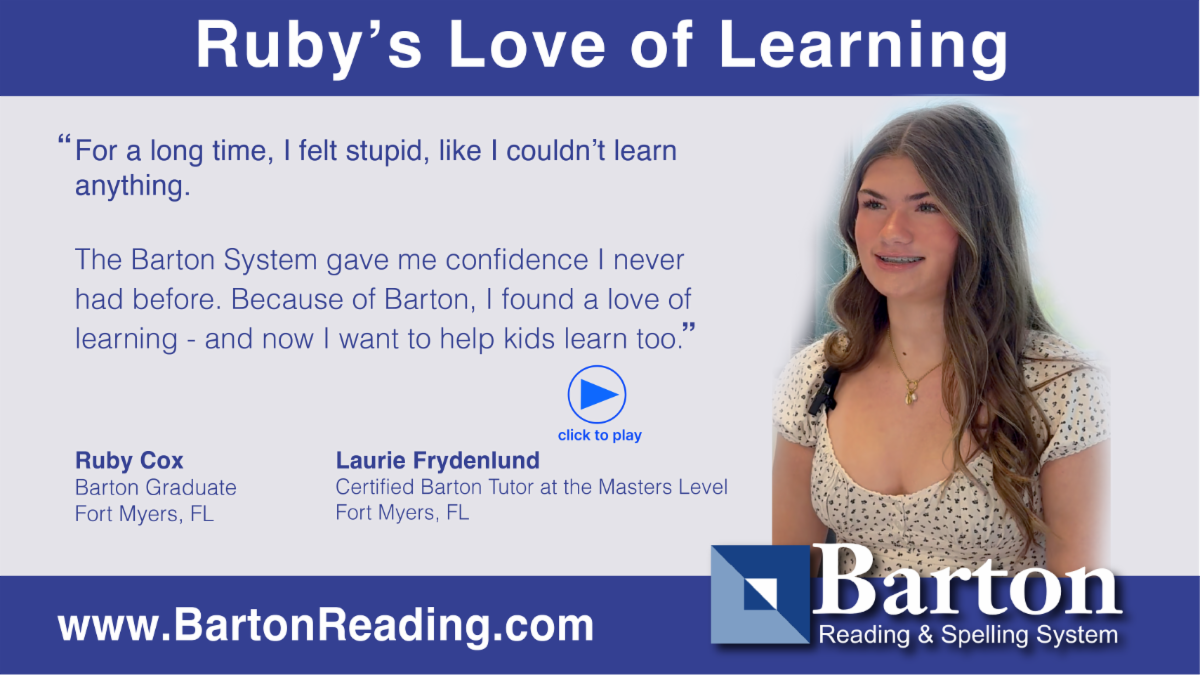
One memory that stands out for Ruby is riding in the car with her mom and suddenly realizing she could read the street signs. “I could never do that before, and that is probably why I want to be an educator,” Ruby shares. “Because of Barton, I found a love of learning, and I want to help kids learn too.”
Looking back, Ruby knows her journey would have been very different without the right type of tutoring. “The Barton Reading & Spelling System changes people’s lives 100%. I think about it all the time —what I would be without Barton. I would be a different person for sure.” Watch Ruby share her inspiring dyslexia journey in this 2-minute video.
|
|
| |
|
|
|
|
How To Spot Dyslexia
|
 |
| |
How To Spot Dyslexia In A Writing Sample
by Susan Barton
If teachers from second grade through high school asked their students to write a one-page essay in class during the first week of school, they could easily pick out the students with dyslexia. And so could their parents.
To learn how to spot dyslexia in a writing sample, watch this video.
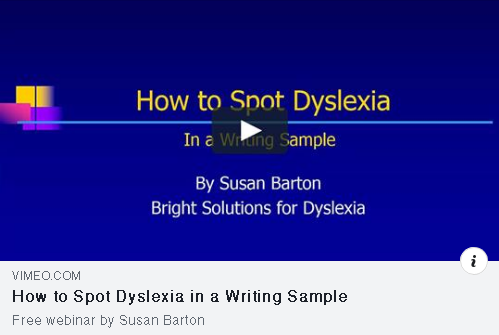
If you want the handout and checklist, click here.
|
|
| |
|
|
|
|
Barton Bulletin
|
 |
|
|
 |

Barton Tiles App Tip:
Save Student Data
Did you know that the latest version of the Barton Tiles App has a feature that allows you to save your students profile information on the cloud?
This helpful feature has been available on the iPad version for over a year, but many Barton tutors still don’t realize it exists. And now, we’re happy to share that it’s also available on the latest Android version of the app!
Saving your data to the cloud ensures you won’t lose your student’s information—even if your tablet is lost, damaged, or replaced. It also makes setting up a new device faster and easier, with no need to retype anything manually.
Make sure automatic updates are enabled on your iPad. Tap here to learn how.
For Google Play updates, tap here.
1. Tap on the Log out button.
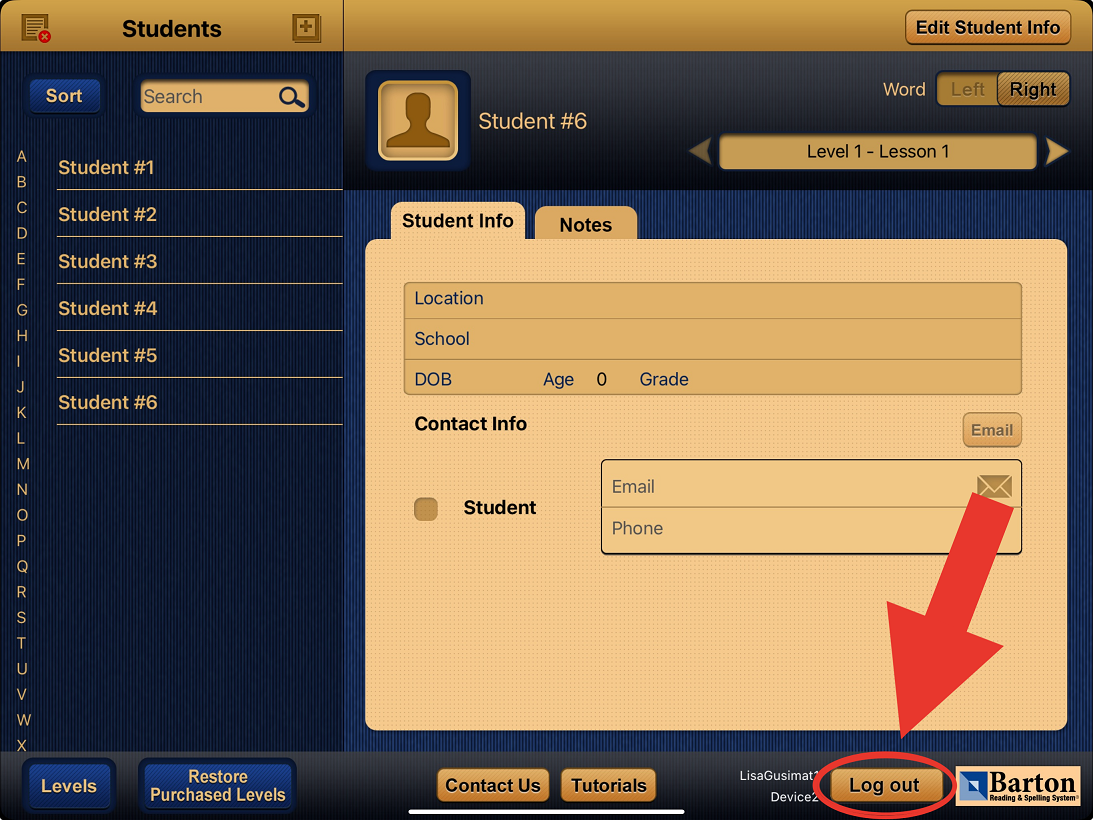
2. Tap on the Export button and save student information to the cloud.
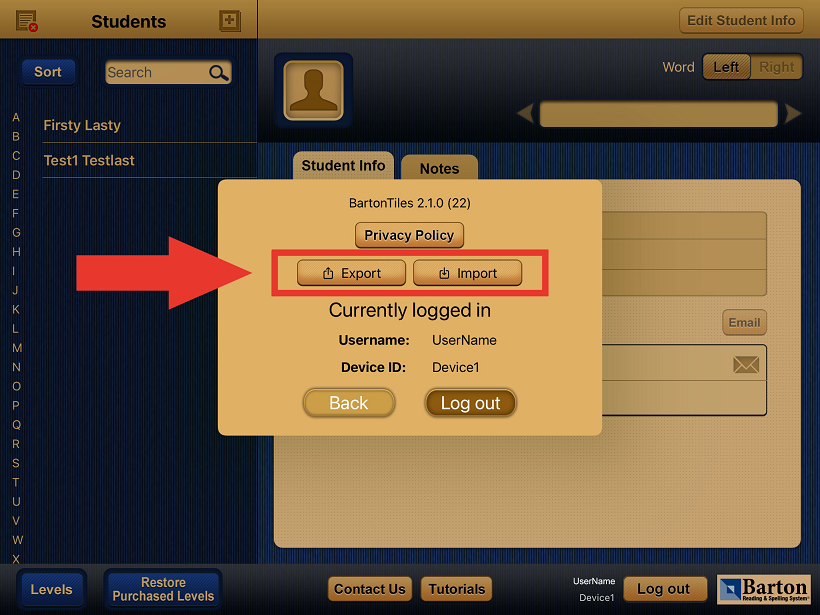
If you have any questions, feel free to call our office. We’re happy to help.
Follow Susan Barton on
     
Susan Barton Dyslexia Stories
|
|
| |
|
|
|
|
|